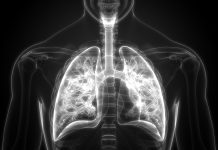An AI-powered lung ultrasound tool has outperformed human experts in diagnosing pulmonary tuberculosis (TB), offering a faster, non-invasive alternative that exceeds WHO benchmarks
Researchers from the University of Lausanne, presenting at the European Society of Clinical Microbiology and Infectious Diseases (ESCMID) Global 2025, revealed that an AI-powered lung ultrasound has the potential to revolutionise pulmonary tuberculosis (TB) diagnosis.
The ULTR-AI suite analyses images from portable, smartphone-connected ultrasound devices, providing a sputum-free, rapid, and scalable alternative for TB detection. Its diagnostic performance exceeds World Health Organization (WHO) benchmarks for pulmonary tuberculosis.
TB rates increased from 2020 to 2023
Despite previous global declines, TB rates increased by 4.6% from 2020 to 2023. WHO’s ‘End TB Strategy’ emphasises the importance of early screening and rapid diagnosis; however, for many high-burden countries, patients typically drop out at the diagnostic stage due to the high cost of chest x-ray equipment and a shortage of trained radiologists.
“These challenges underscore the urgent need for more accessible diagnostic tools”, explained lead study author, Dr. Véronique Suttels. “The ULTR-AI suite leverages deep learning algorithms to interpret lung ultrasound in real-time, making the tool more accessible for TB triage, especially for minimally trained healthcare workers in rural areas. This technology can help diagnose patients faster and more efficiently by reducing operator dependency and standardising the test.”
Dr. Véronique Suttels specialises in tuberculosis diagnostics and respiratory health in resource-limited settings. Since 2021, she has led the RuraLUS training program, advancing respiratory POCUS in low- and middle-income countries and is focusing on ultrasound-based TB triage to improve global diagnostic access.
ULTR-AI exceeds WHO benchmarks in TB detection
The ULTR-AI suite uses three deep learning models: ULTR-AI predicts TB directly from lung ultrasound images; ULTR-AI (signs) detects ultrasound patterns as interpreted by human experts; and ULTR-AI (max) uses the highest risk score from both models to optimise accuracy.
The study was conducted at a tertiary urban centre in Benin, West Africa. After exclusions, 504 patients were included, with 192 (38%) confirmed to have pulmonary TB. Within the study, 15% were HIV-positive and 13% had a history of TB. A standardised 14-point lung ultrasound sliding scan protocol was performed, with human experts interpreting images based on typical lung ultrasound findings. The reference standard was a single sputum molecular test (MTB Xpert Ultra).
The researchers found that ULTR-AI (max) demonstrated a 93% sensitivity and 81% specificity (AUROC 0.93, 95% CI 0.92-0.95), exceeding WHO’s target thresholds of 90% sensitivity and 70% specificity for non-sputum-based TB triage tests.
“Our model clearly detects human-recognisable lung ultrasound findings—like large consolidations and interstitial changes—but an end-to-end deep learning approach captures even subtler features beyond the human eye,” said Dr. Suttels. “Our hope is that this will help identify early pathological signs such as small sub-centimetre pleural lesions common in TB.”
“A key advantage of our AI models is the immediate turnaround time once they are integrated into an app,” added Dr. Suttels. “This allows lung ultrasound to function as a true point-of-care test with good diagnostic performance at triage, providing instant results while the patient is still with the healthcare worker. Faster diagnosis could also improve linkage to care, reducing the risk of patients being lost to follow-up.”








